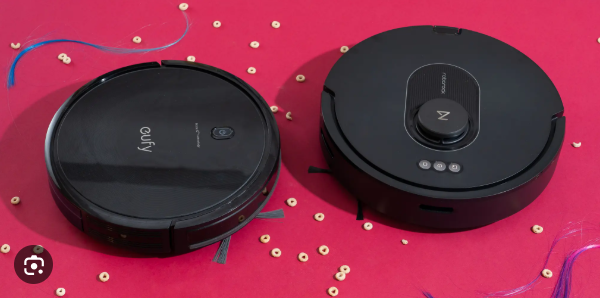When investing in a robot vacuum, it’s easy to focus on features like suction power, battery life, or smart mapping technology. But there’s another crucial factor that often gets overlooked — the warranty and after-sales support. A good warranty not only gives you peace of mind but also saves you from unexpected repair costs down the road. Whether you’re eyeing premium brands or budget-friendly models, understanding what’s covered (and what’s not) can make all the difference.
Let’s break down what you should know about robot vacuum warranties, after-sales services, and how to ensure you’re making a smart purchase.
Why Warranty Matters for Robot Vacuums
Robot vacuums are complex devices equipped with sensors, motors, circuit boards, and software. Over time, these components can wear out or malfunction — sometimes due to manufacturing defects or user mishaps. That’s where a warranty steps in.
A solid warranty acts as your safety net. It ensures that if your device encounters certain issues within a specified period, the brand will repair or replace it at no additional cost. Without it, even minor repairs can quickly add up to a significant expense.
Most reputable robot vacuum brands, such as MOVA, iRobot, Roborock, and Ecovacs, offer warranties ranging from one to three years, depending on the model and region. However, what’s covered can vary significantly — which is why reading the fine print is essential.
What’s Typically Covered in a Robot Vacuum Warranty
While every manufacturer’s policy is a little different, here are the common components usually covered under a standard warranty:
- Motor and Suction Components: The motor is the heart of your robot vacuum. If it fails due to manufacturing defects, most brands will replace or repair it free of charge within the warranty period.
- Battery: Batteries are usually covered for a shorter duration (often 6–12 months) since they naturally degrade over time. Some premium models come with extended battery warranties, especially if you register your product online.
- Charging Dock: If your robot fails to dock or charge due to a defect in the charging base, it’s typically included in the coverage.
- Main Control Board and Sensors: Smart navigation and mapping rely on multiple sensors and circuit boards. If these malfunction due to no fault of your own, the warranty should cover repair or replacement.
What After-Sales Support Should Include
A product warranty is only as good as the after-sales support that backs it up. Even the most advanced robot vacuum will eventually need replacement parts or troubleshooting help. Reliable after-sales service ensures you’re never stuck with an expensive gadget that doesn’t work.
Here’s what to look for:
- Responsive Customer Service: A good brand should offer multiple contact options — including live chat, email, or phone support. Fast and friendly service makes all the difference when your vacuum stops working unexpectedly.
- Spare Parts Availability: Check if the manufacturer offers easily available replacement parts like filters, rollers, and side brushes. For example, MOVA provides a full line of Robot Vacuum Accessories so you can maintain your device without hassle.
- Repair Centers and Return Policies: Look for brands with local service centers or a simple return process. Some even provide free pick-up and delivery for warranty claims. This convenience can save time and frustration, especially if you live in Canada or other regions with limited service hubs.
- Firmware Updates and App Support: Top-tier robot vacuums often receive software updates that enhance performance, fix bugs, or add new features. After-sales support should include these updates for a better long-term experience.
Extended Warranties and Protection Plans: Are They Worth It?
Retailers often offer extended warranties or protection plans at checkout. These typically add one or two years of coverage beyond the manufacturer’s warranty. Whether it’s worth it depends on your usage habits and the price of the vacuum.
For instance, if you use your robot vacuum daily in a large home with pets, an extended warranty might be a smart investment. However, for smaller spaces or occasional cleaning, it might not be necessary. Always read the terms carefully — some extended plans only cover manufacturer defects, not accidental damage.
How to Keep Your Robot Vacuum Warranty Valid
Many users accidentally void their warranties by neglecting maintenance or using unauthorized parts. Here are some quick tips to ensure your coverage stays intact:
- Clean sensors, filters, and brushes regularly to prevent overload or malfunction.
- Use only brand-approved accessories and cleaning solutions.
- Avoid water exposure unless the product is designed for wet mopping.
- Store in a cool, dry place to protect the battery and electronics.
- Follow the user manual for proper setup and operation.
Taking care of your robot vacuum not only extends its lifespan but also ensures that the manufacturer honors your warranty when needed.
Final Thoughts
A robot vacuum is more than just a cleaning gadget — it’s an investment in your home’s convenience and cleanliness. But even the best model can encounter technical issues over time. That’s why understanding robot vacuum warranties and after-sales support is just as important as comparing suction power or navigation systems.
Before you buy, make sure to:
- Review the warranty terms and coverage period.
- Confirm the availability of local repair services and replacement parts.
- Register your product and keep your purchase receipt safe.
- Choose a brand known for responsive, reliable after-sales support.
With the right warranty and service plan, you can enjoy hassle-free cleaning for years — confident that your robot vacuum is protected.




